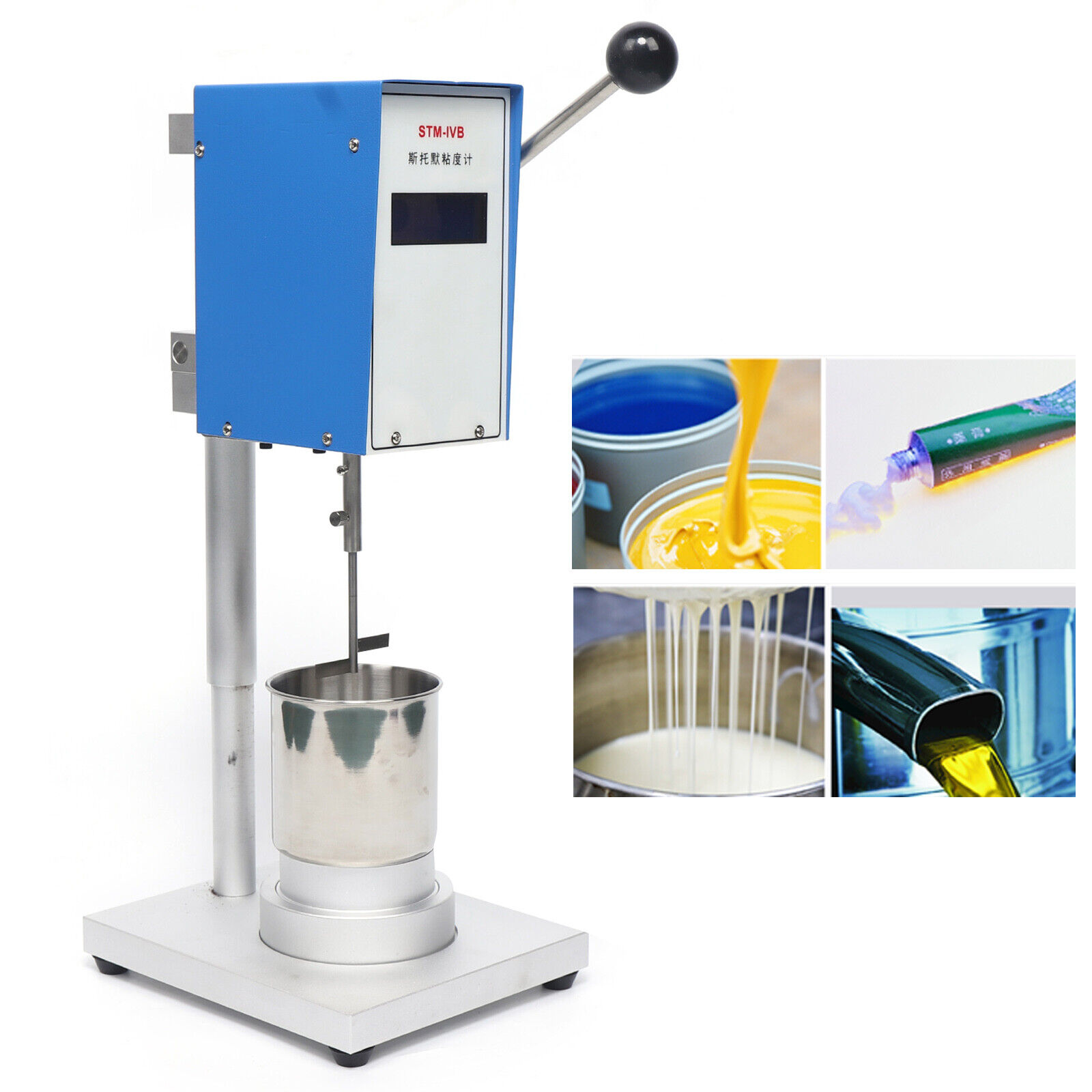-40%
Digital Stormer viscosimeter STM-IV Paint Viscometer ink viscosity Meter 1.5%FS
$ 406.56
- Description
- Size Guide
Description
DescriptionStormer viscometer is a test instrument used to determine the viscosity of paint and other paints with KU value. This instrument can simultaneously display the KU value, CP (centipoise), g (gram), and room temperature of the measured sample viscosity.
The design basis of this instrument is ASTM-D562 standard and GB9269-88 standard.
Specifications
*Measuring range: 40.2KU-141.0 KU (KU) value 32g-1099g (load value), 27 cp-5250cp
*Measurement accuracy: 1.5% of full scale
* Measurement repeatability: 1.5% of full scale
*The stirring shaft speed: 200 r/min±1 r/min
*Container capacity: about 500ml
*Input voltage: 110V 60HZ
*Power: 10W
Weights&Dimensions
Dimensions: 210mm*180mm*500mm (length * width * height)
Weight: 10kg
What's Included?
1*Stormer host
1*paddle
1*Measuring cup
1*Instruction
1*Certificate
Features&Highlights
This instrument is controlled by a m
icrocomputer.
The stirring blade is driven by a special constant speed motor to rotate at a
speed of 200r/min.
The resistance torque of the stirring blade rotating in the tested sample is converted by the computer to
KU value
(Krebs K rebs) unit (KU)
to produce 200 A logarithmic function of the load required for r/min speed, generally used to express the viscosity for brushing and rolling).
The operator only needs to insert the stirring blade into the sample to be tested to the specified depth, and the KU value corresponding to the sample can be directly read from the instrument, CP (centipoise) g (gram).
Test environment:
1. The instrument should be placed on a firm and flat surface away from the interference of strong air currents, strong magnetic fields, strong electric fields, and strong electric pulses.
2. To ensure the safety of the operator, the power socket in the laboratory should be reliably grounded.
3. The temperature in the laboratory should be 23℃±2℃, and the relative humidity should be no more than 75℃.
4. The temperature of the sample should be 23℃±0.2℃.
Operation and use:
1. Take the instrument out of the box and place it on the workbench.
2. Take out the stirring blade from the packaging box, insert it into the sleeve of the rotating shaft according to the outline drawing, and fix it with the jacking screw. Note that the jacking screw should be on the flat opening of the stirring blade.
3. Plug in the power plug and turn it on without the power switch, the LCD will display the KU value, and the ¢ g reading is zero.
4. Put the sample to be tested into the container that comes with the instrument, and the liquid level is about 10mm away from the container mouth.
5. Place the container with the sample to be tested on the container base, press down the lifting handle, and immerse the stirring blade in the sample to be tested, and the mark on the shaft of the stirring blade is flush with the liquid surface. The instrument automatically starts to run.
6. After a few seconds, the display will display the KU value of the sample to be tested, CP (centipoise) g (gram) (the sample to be tested must be stirred for a few seconds to achieve uniformity, that is, dynamic equilibrium, the data displayed at this time is accurate)
7. After the measurement is over, raise the lifting handle to a high place, and there is a limit device near the highest position, which can keep the instrument in this position. The instrument stops rotating and enters the standby state again.
Matters needing attention
1. There are precision measuring parts in the chassis of this instrument, so handle it with care.
2. This instrument is a special-purpose instrument, if special personnel do not disassemble the outer shell of the instrument, so as not to affect the measurement accuracy of the instrument.
3. When the instrument is temporarily not in use, the lifting handle of the instrument should be kept on the upper limit device, and should not be placed in a lower position, otherwise it may cause inflexible lifting.
4. It should be sent to the relevant metrological supervision department for inspection once a year.
On Nov 16, 2022 at 19:13:09 PST, seller added the following information:

















